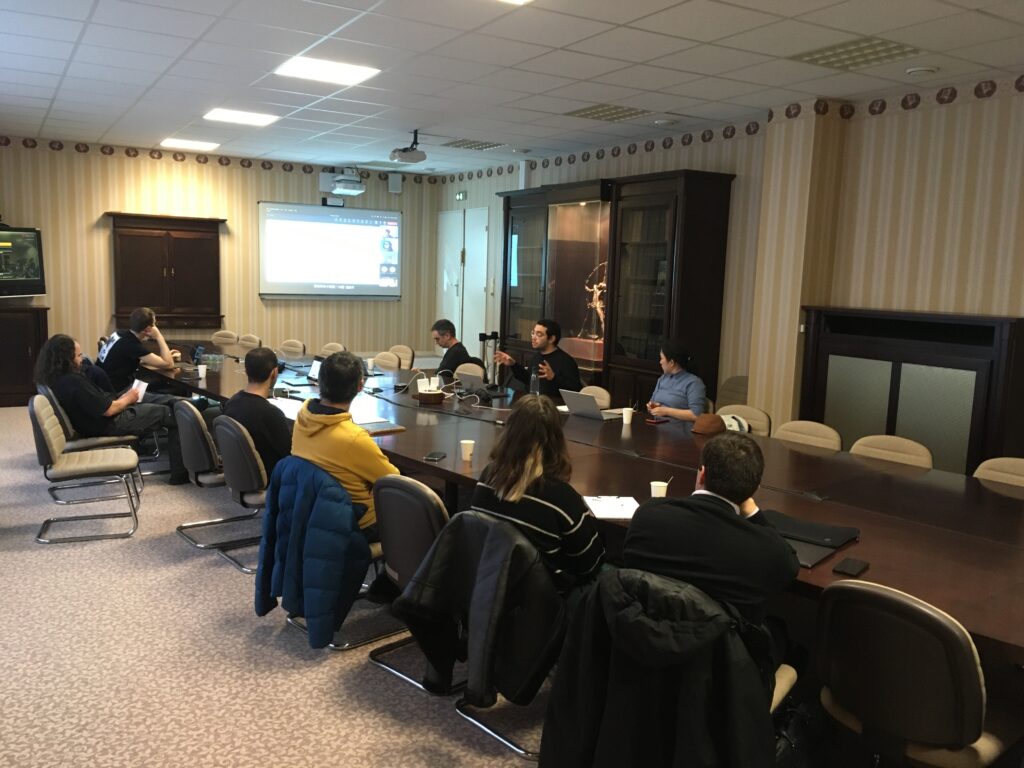On June 19th and 20th, we held our plenary session in Reims. 
Author: villardp
Article accepted
Our article about “Quasi-Static Cosserat Rods in Contact with Implicit Surfaces”, by Radhouane Jilani, Pierre-Frédéric Villard and Erwan Kerrien (Inria NGE) was just accepted to IEEE Robotics and Automation Letters!
Paper accepted
Our paper about “Solving Dynamic Cosserat Rods with Frictional Contact Using the Shooting Method and Implicit Surfaces”, by Radhouane Jilani, Pierre-Frédéric Villard and Erwan Kerrien (Inria NGE) was just accepted to IROS 2024!
New intern student
Pauline Bonnet has recently started her M1 internship at the Loria lab. She will work on the simulation of a catheter with physics-informed neural networks (WP2). Welcome to the team Pauline!
Fourth plenary session in Nancy
Third plenary session in Reims
Second plenary cession in Lyon
Today we had our secondary plenary cession in the CREATIS lab!
Today, Meghane Decroocq gave a talk entitled “Modeling and hexahedral meshing of arterial networks from centerlines”
Abstract: We present a two-step method to obtain a realistic mesh of vascular tree from only a few centerline points:(1) A parametric model of the vessels relying on physiological parameters is computed.
(2) A mesh with high-quality flow-oriented hexahedral cells is generated from the model. A user-friendly interface was developed to open the use of the proposed methods to non-expert users. It includes many tools to visualize and manually edit vascular trees at the different steps of the meshing pipeline.
First in-person plenary cession in Nancy
The first plenary cession has been held in Nancy. A visit of the CIC-IT has been conducted in the morning. Then, in the afternoon, all the work-packages has been reviewed.




